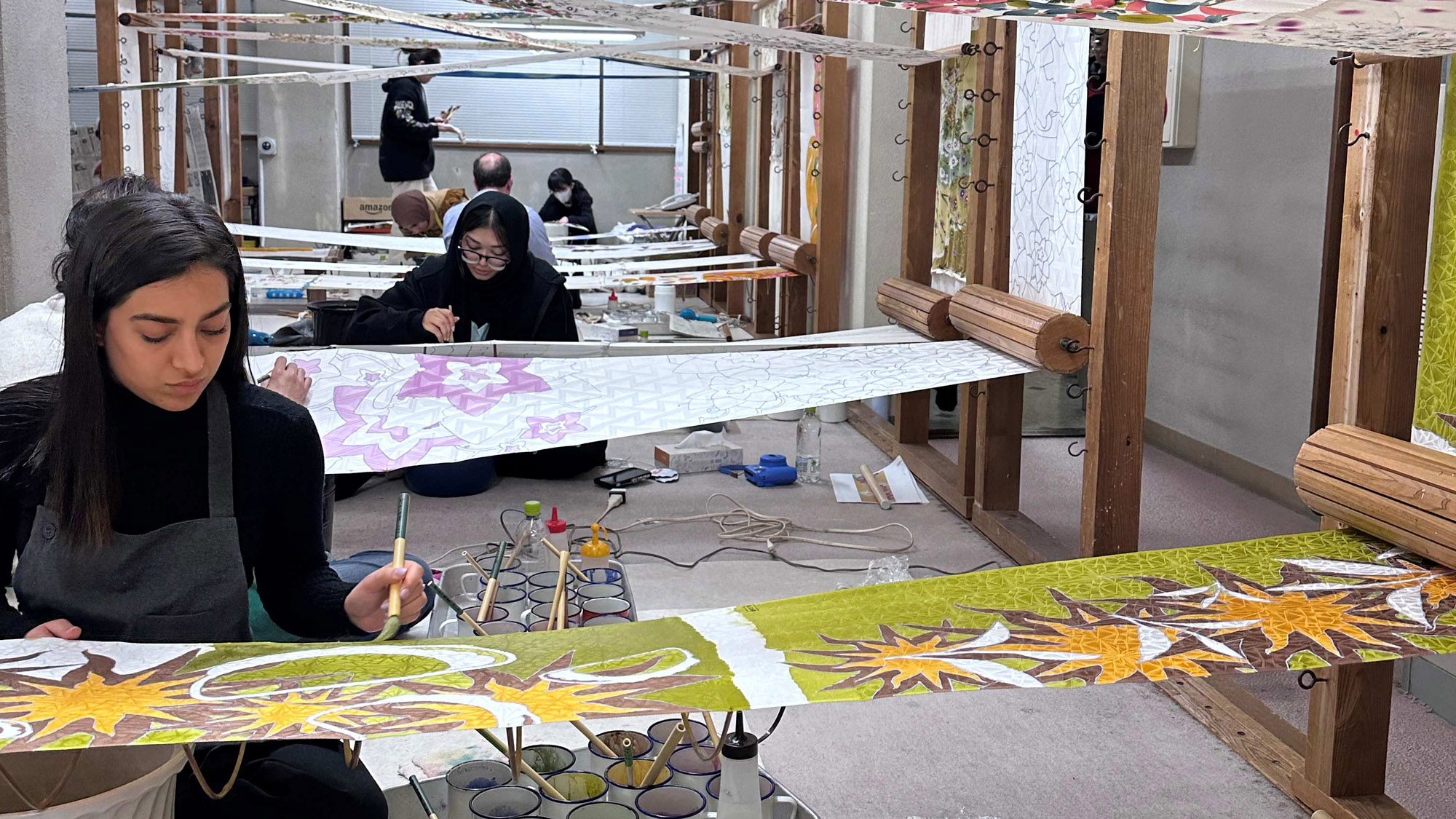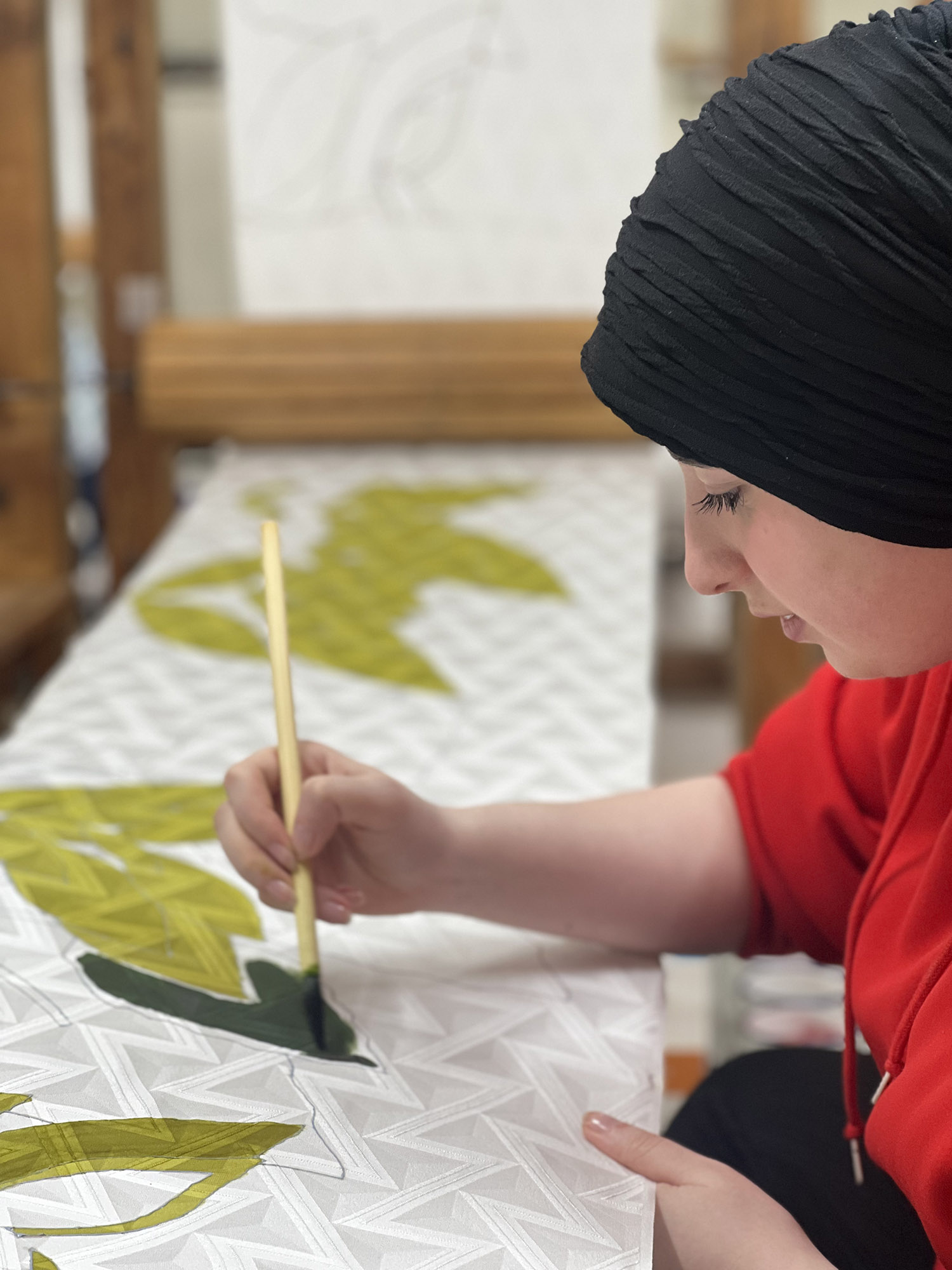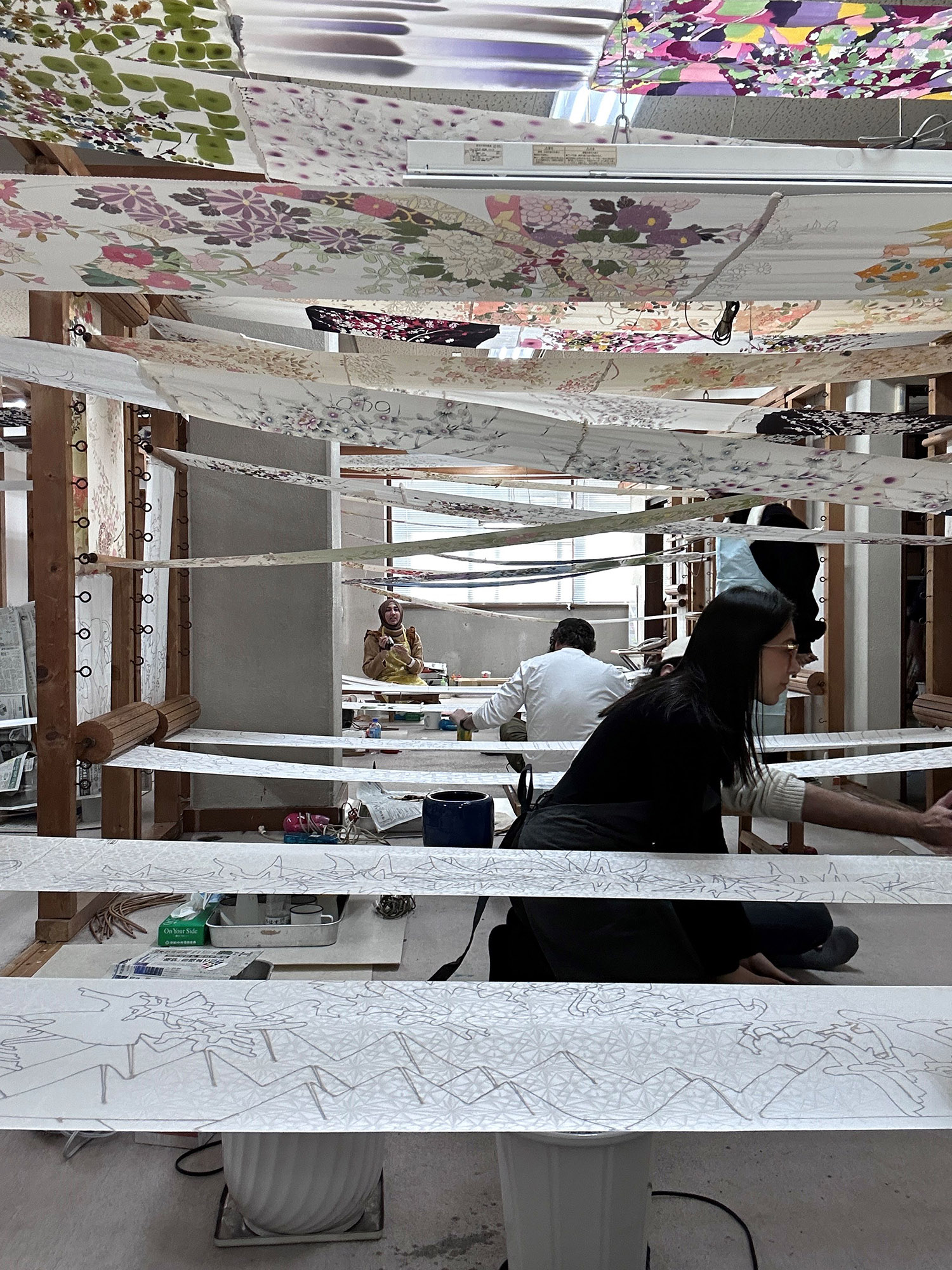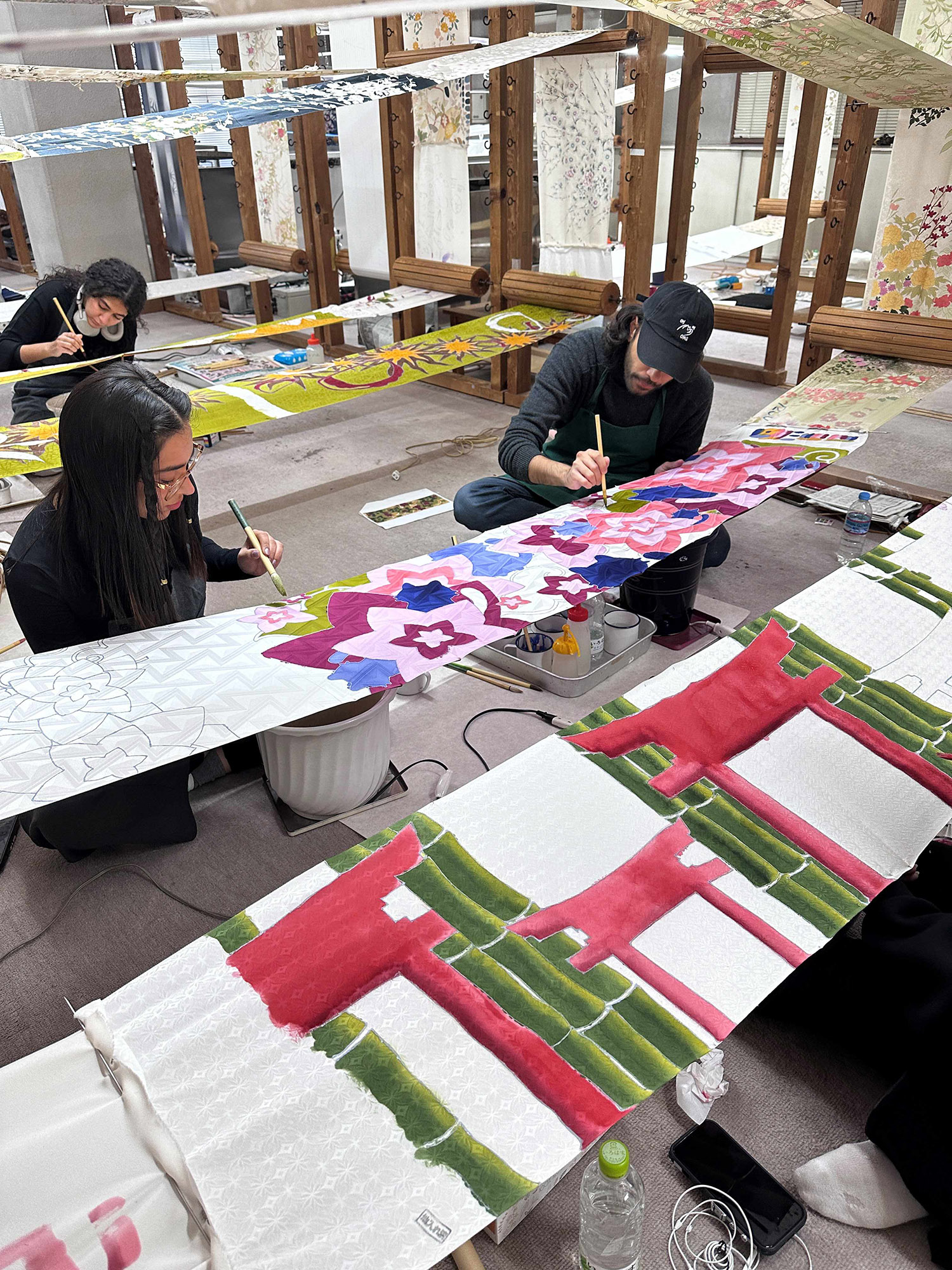- Academics
- Admissions & Enrollment Services
- Research
- Academic & Creative Spaces
- Strategic Partnerships
- Our Impact
- Student Affairs
- Campus & Community

The purpose of the trip was to learn traditional silk dyeing techniques used for making Japanese kimonos
A VCUarts Qatar international study trip teaches students how one’s approach to design is intrinsically tied to one’s approach to life



Students in the Master of Fine Arts in Design (MFA in Design) program at VCUarts recently went on a study trip to Japan. The purpose of the trip was to learn traditional silk dyeing techniques used for making Japanese kimonos.
Spread across three distinct steps, the process of learning and experimenting with the process of silk dying started before they set out.
During step one, before the trip, students used generative software to create patterns of their choice. They then used a plotting machine to trace those designs onto rolls of silk, using washable pens. These patterns would then be imprinted on the kimonos during the workshops in Japan.
Step two commenced in the workshops in Japan. The participants applied a mixture of rubber glue over the patterns they had created in Doha. This step seals the silk to minimize paint bleed during the final step. It also contributes to the finely outlined patterns the kimonos are renowned for. Once applied, the fabric and glue are treated with a mixture of chemicals to help it set properly before the final step.
The final step was painting the treated fabric, a process that required care and attention to detail. The paint had to be applied quickly to prevent it from getting patchy, but in moderation, to prevent bleeding. Participants painted on silk textiles suspended over heaters to help the paint dry faster while they worked. A variety of brushes helped achieve different levels of detail and ensure a smooth coat in designs that spanned large swathes of fabric.
For Syed Muhammad Erzum Naqvi, a first-year MFA in Design student,the way Japanese culture permeates every aspect of life in Japan was the highlight of the trip.
“The efforts put into maintaining their culture are obvious, from the preservation of their historical monuments to the way they conduct day-to-day activities,” he said.
“Even the artisans that we worked with were practicing their craft for decades. Not only were they an inspiration in terms of their work, but also their discipline. Every step of their creative process was meticulous, from the way they organized their brushes at the end of the day, to the way they would happily spend hours mixing paints by eye to get the right colors. The priority was not in rushing through and mass producing their pieces, but in making sure that every step of the process was given care and attention.”
Naqvi added that the experience gave him a fresh perspective on the very concept of creativity.
“The Japanese design sensibility is very different to the way we approach design in Qatar, or even in our exposure to Western design. It was eye-opening to lean into an approach that not just prioritized a meticulous process but also allowed the material to inform its own form. The idea of ‘letting the material do what it wants’ feels intimidating to our more controlled approach, but results in some very evocative work.
“Instead of trying to impose our own will onto each piece, it’s a philosophy that embraces flaws and imperfections, allowing us to work more with challenges rather than despite them. It’s a refreshing and fascinating mentality that I hope to emulate in my approach to design,” he explained.

